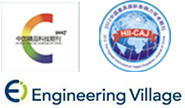Abstract:
Due to the high strength and lightweight, epoxy-based composites have high application value in the fields of aerospace and automotive. However, the brittle nature of epoxy resins significantly hinder theirapplication in real engineering, and it is still a great challenge to improve the strength and toughness of the epoxy-based composites. Herein, we develop an epoxy-based composite lattice composing of strengthening zones and toughening zones, which are rationally assembled into a layered structure through direct ink writing technique. The physical and chemical properties of the epoxy-based composite inks and printed filaments were characterized by rotational rheometer and optical microscope, and a universal testing machine was used to evaluate the mechanical properties of the epoxy-based composite lattice with various structural parameters. It is found that the specific strength, toughness and fracture toughness of the epoxy-based composite lattice increase by 95%, 630% and 19.1% compared to the solid composite, respectively. Based on the fracture surfaces and finite element analysis, it can be concluded that the strengthening zones ensure the structural strength, while the toughening zones are capable of effectively sharing the external deformation and preventing the crack propagation. The current research provides new ideas and theoretical basis for the design, manufacturing, and applications of structural nanocomposites with high strength and toughness.


 下载:
下载: